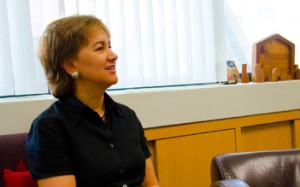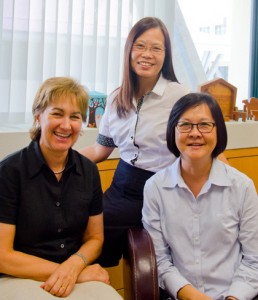A Culture of Care
How can you help children with special needs in your class feel like they belong? Your Allied Educator, fellow teachers, school leaders, the child’s classmates and parents can all be recruited to help create an inclusive environment in school.
Dr Maureen Neihart is no stranger to working with children with special needs. She has spent many years as a clinical child psychologist helping such children and their families.
 But when she came to Singapore 7 years ago, Maureen says what she saw broke her heart. There was a dire need for support for both the kids and their families. “I wanted to learn more about how we can help the school to help the kids,” she says.
But when she came to Singapore 7 years ago, Maureen says what she saw broke her heart. There was a dire need for support for both the kids and their families. “I wanted to learn more about how we can help the school to help the kids,” she says.
Thankfully, the state of support for students with special needs has vastly improved since then. With the Ministry of Education placing a greater emphasis on inclusive education, there is now strong support, especially in primary schools.
But how are teachers responding to the call for more inclusive classrooms? To what extent are schools meeting the needs of these children?
Together with colleagues Dr Chong Wan Har and Dr Yeo Lay See, Maureen set out to understand what inclusion means in the Singapore context through their research.
Full Participation in the Classroom
Both Maureen and Wan Har agree that the teacher plays an important role in defining what inclusion is and how it looks like in the classroom.
But in the classrooms they observed, they noticed that much of the focus was on “managing” pupils with special needs.
“Many of their activities centred around how do you manage a child so that he can fit in, so that he’s not disruptive, he can participate and do the work,” notes Wan Har. But they believe inclusion should be more than that.
“There’s inclusion and there’s full inclusion,” says Maureen. “A child can be present in the classroom – so in that sense, they’re physically included – but they’re not necessarily a fully participating member of the classroom.”
Enabling Success Experiences
For teachers to feel they can make a difference, training alone is not enough.
“You can send teachers to workshops and you can read a lot of books, but you’re still going to feel, at the end of the day, you don’t have enough training,” says Maureen. What teachers really need is to experience success.
“What really empowers the teacher to believe that they can do this is when they have a success experience with a student,” she says.
This positive experience can help build self-efficacy. And this has important implications for staff development and how we prepare teachers.
“Looking at it from the school’s perspective, how do you really organize and structure the experiences of the teachers in order to enable them to feel more empowered that they can actually contribute to the success of this child?” adds Wan Har.
A Network of Enablers
 Teachers don’t need to do it alone. In the spirit of true inclusion, a combined effort is necessary for success.
Teachers don’t need to do it alone. In the spirit of true inclusion, a combined effort is necessary for success.
“In order for the child to benefit from inclusion, we really do need a network of people to enable the process,” says Wan Har. One important enabler is the Allied Educator (AED).
Many AEDs see themselves as an additional help to the classroom teacher. But Maureen and Wan Har believe they can be more valuable than just a “go-to” resource for teachers when difficulties arise.
AEDs can be equal partners with the teachers, and aptly deemed allies to the child’s learning process. “Other than perceiving themselves as a source of help, perhaps they need to reframe their role as a mentor, as a coach – and not just a help,” says Wan Har.
Maureen envisions AEDs as capacity builders who can impart skills and knowledge to teachers who deal with special needs children.
“They can begin to focus and teach the teachers, empower the teachers, and set realistic expectations for the child,” Wan Har suggests. By doing so, AEDs will enable more successful experiences for teachers.
Maureen and Wan Har also recommend talking to other teachers who have taught the child. They can provide valuable comments and suggestions on how to include the child.
Valuing Inclusion
We all know, based on anecdotes, that school leadership should play a critical role in fostering an inclusive environment. Looking at the data, Maureen was surprised to note how strong a force it can be.
– Maureen Neihart, Psychological Studies Academic Group
“It was overwhelming that what really made a difference, from the teachers’ position, was not what the school leaders did but what they believed. It was the value system of the school leaders,” says Maureen.
“I’ve started to frame inclusion as a school culture,” she continues. “We’re changing the norms, values and shared beliefs of the school community, and it’s the school leaders who drive that. Their own personal values about inclusion really empower the teachers.”
“It’s not a personal problem because that child happens to be in my class,” stresses Wan Har. “It should be everybody’s concern.”
She describes this as a “culture of care”, where the whole school community – the teachers, AEDs, and leaders – see it as their mission to support these children and see them grow. Everyone must value inclusion.
Inclusion also shouldn’t be limited to just the classroom or school. If more people believe in caring for and including all people with various abilities and disabilities, at the end of the day, society benefits. But it has to start somewhere.
“If a school doesn’t value it, then I don’t think it’s likely that society will,” says Maureen. “School is a good starting point.”






